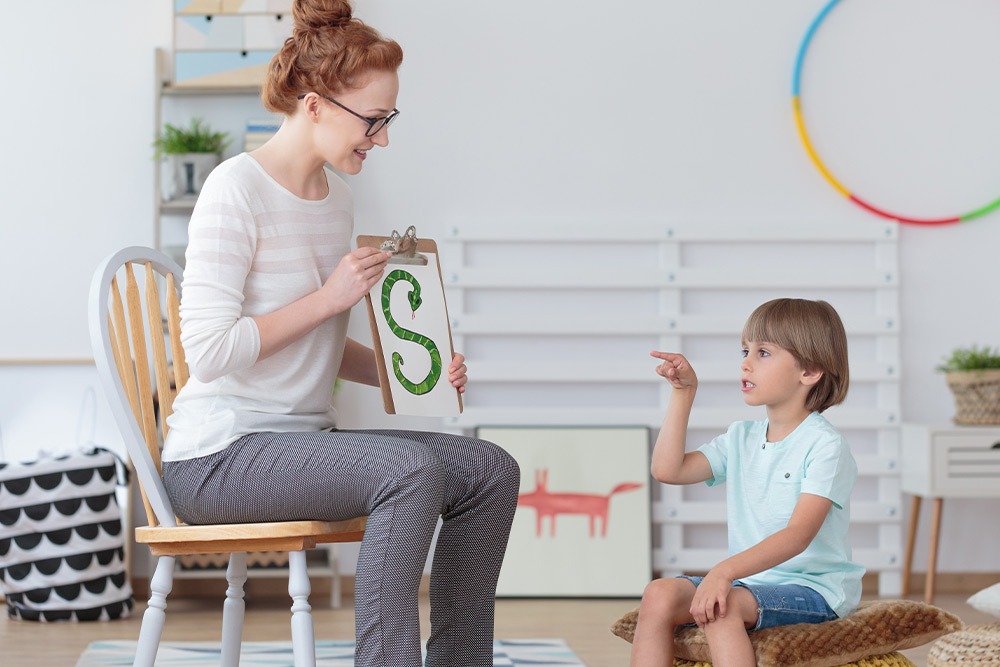
How a Consultative Speech Therapy Model Helps Kids and Caseload Size
Are you a school-based speech-language pathologist (SLP) concerned about your caseload size?
Since 1995, full-time SLPs in schools have had a median monthly caseload size of about 50 students, according to surveys from the American Speech-Language-Hearing Association (ASHA). But, research suggests caseloads this large work against effective interventions.
Fortunately, since the mid-1990s, a consultative model for speech therapy has been gaining greater traction.
It recognizes responsibility for students’ positive speech, and language outcomes don’t rest on the SLP’s shoulders alone. And, when used in a Multi-Tiered Systems of Support (MTSS) context, it can help keep caseloads from growing even larger.
At Pediatric Therapeutic Services (PTS), we adopt an MTSS approach to service delivery. It encourages and empowers classroom teachers to deliver Tier 1 interventions for speech when appropriate.
Students get the amount of help they actually need. And, you get to save time and energy for those who truly do belong on your caseload.
Key Characteristics Of Consultative Speech Therapy Delivery
The consultative model of speech therapy is a model for indirect therapy. This model:
- Allows Students to Receive Services in the Least Restrictive Environment (LRE).
The Individuals with Disabilities Education Act (IDEA) mandates students with disabilities must, to the “maximum extent appropriate,” be educated with students who don’t have disabilities. Schools can’t automatically send kids who need speech therapy off to the isolated “speech room” down the hall! Working on speech skills in the same classroom with their peers also helps these kids generalize those skills, making critical connections between the therapy setting and everyday life. - Incorporates Speech and Language into the General Education Curriculum.
When you consult with classroom teachers, you can give them practical tips and strategies for eliciting language in the classroom.Equipped by you, teachers can encourage students to talk about the subjects they’re currently studying—a science lesson, for instance—or help them master curricular vocabulary. - Promotes Optimal Outcomes for Students with Speech and Language Needs.
We sometimes call the consultative model the “collaborative consultation” model, because it depends on SLPs working together with teachers to identify and address students’ needs. This model is “more than simply talking with teachers or parents,” as Dr. Kathy Coufal wrote in an important article on the subject almost 20 years ago. It demands therapists and others “believe that ‘two heads are better than one’ and that through sharing and co-participation, the probability for optimal outcome is enhanced.”
Reviewing the Speech-Language Pathologist’s Role in MTSS
When we talk about MTSS, we’re referring to this framework:
- Tier 1
Teachers in the general education classroom proactively provide support and services to the whole student population, helping 80-90% of them develop necessary skills. - Tier 2
Students who don’t respond to Tier 1 interventions (5-10% of the student population) receive more specialized supports and services in small groups. - Tier 3
Therapists provide targeted supports and services to students with the most serious disabilities and disorders (about 1-5% of the student population).
“Before MTSS,” Dr. Lesley Sylvan writes for ASHA, “students had two options: either receive direct speech-language services through special education or access no SLP support at all.”
But thanks to MTSS, students can get SLP support without going on caseload unless absolutely necessary. Consulting and collaborating with teachers, SLPs provide services leading to better outcomes in expressive, receptive, and social language; fluency; articulation; and more.
Tier 1 Intervention Ideas for SLPs to Share with Teachers
As part of a consultative speech therapy model, you’ll train teachers in Interventions that make a mighty contribution to the MTSS model’s success. ASHA finds more than half of SLPs overall (57%) are involved in MTSS by providing strategies to classroom teachers.
Consider articulation, for instance. Not every mispronounced sound or dropped letter indicates a speech sound disorder requiring direct therapy. Before making a referral, teachers can try several strategies.
And, many Tier 1 interventions for speech can be a lot of fun! Teachers can:
- Encourage students to pretend they’re catching snowflakes on their tongue to make sure students can move their tongue independently from their lips and teeth.
- Have students use straws to blow cotton balls or tissues across a table to practice proper breath support.
- Enjoy some tongue twisters to strengthen coordination and timing.
None of these interventions require clinical knowledge or specialized equipment. But, they all go a long way toward determining which kids really need to be on caseload and which ones don’t.
Want more examples of speech Tier 1 interventions? Click here to download detailed and illustrated Consult Cards from PTS.



